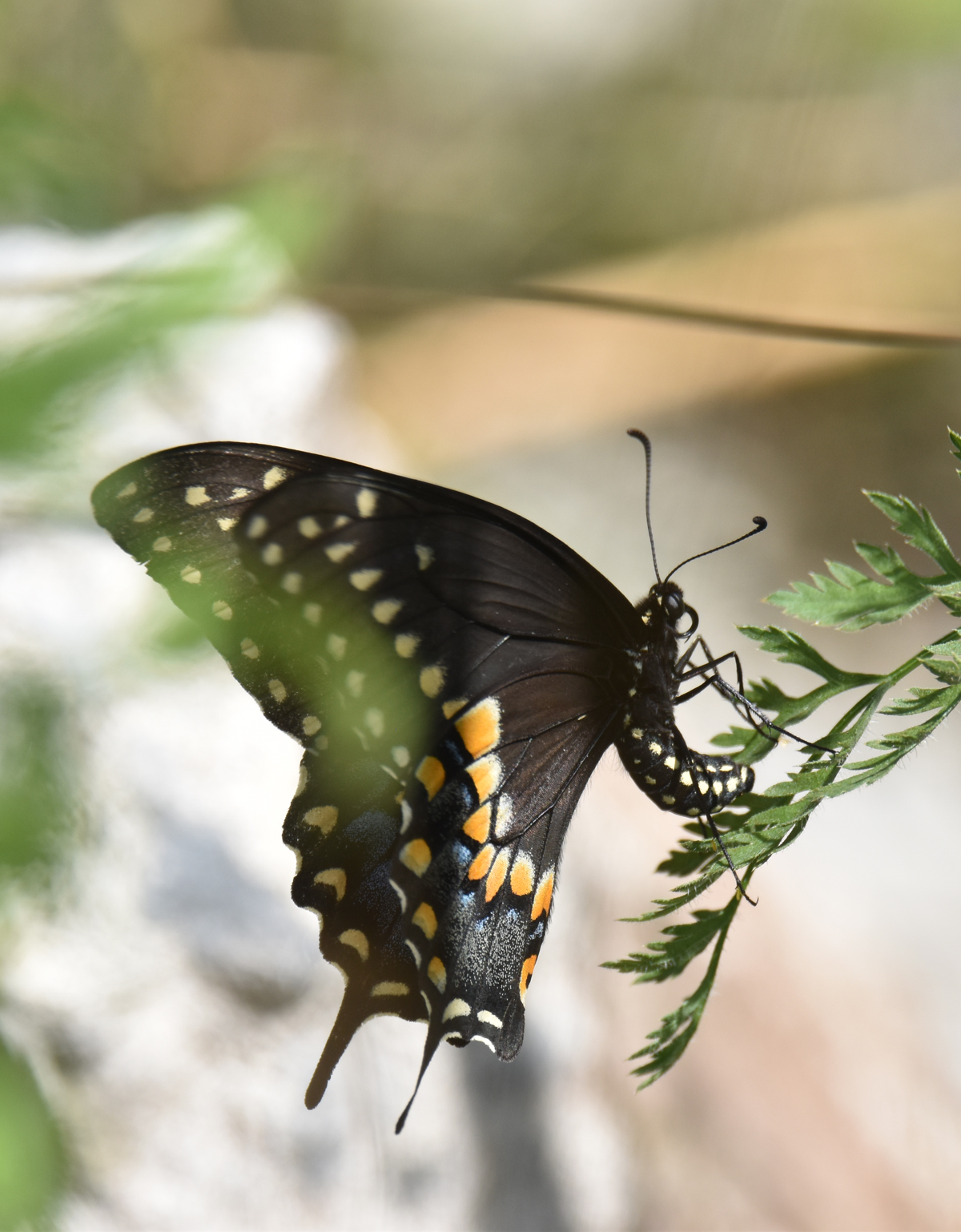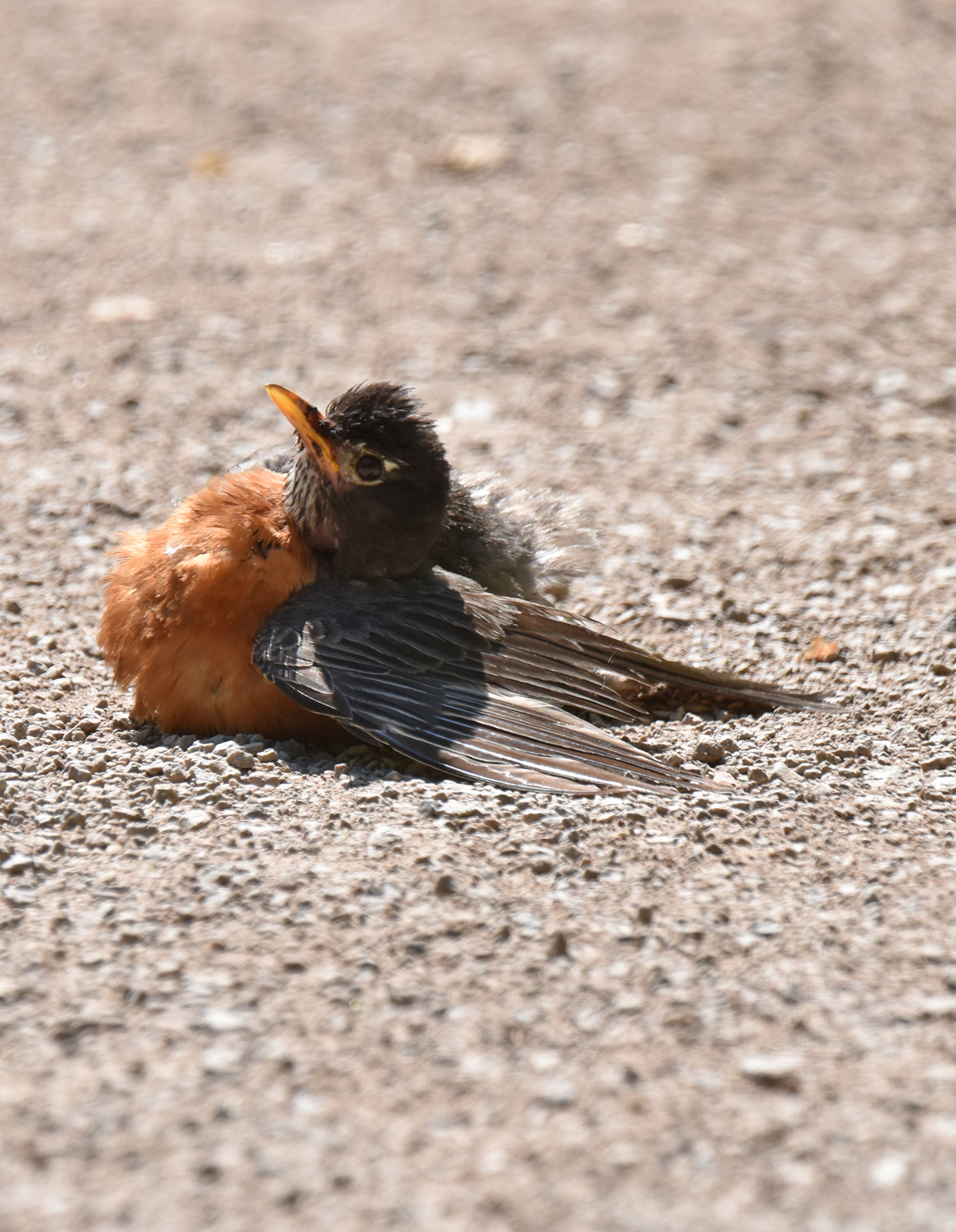In mid-July I had a little under two hours to fill while in Oakville, Ontario near Lion’s Valley Park so it’s likely no surprise that I rambled along Sixteen Mile Creek to enjoy my wait. Along my journey I encountered some six-legged Wood Nymphs and a very odd looking American Robin.

People complain about Purple Loosestrife but I often see butterflies using it for nectar.

This Wild Indigo Duskywing also liked the Loosestrife.
What Are Those Dark Butterflies Flying Over the Meadow That Drop Out of Sight Whenever They Land?
As usual, I looked for butterflies during my walk beside the meadows near the picnic park north of Dundas Street near the main parking lot. The small dark brown Wild Indigo Duskywings were fairly easy to identify. So was the gloriously bold and bright Monarch. Some smaller orange and black Crescents were a bit more challenging to recognize but I did once one finally landed.
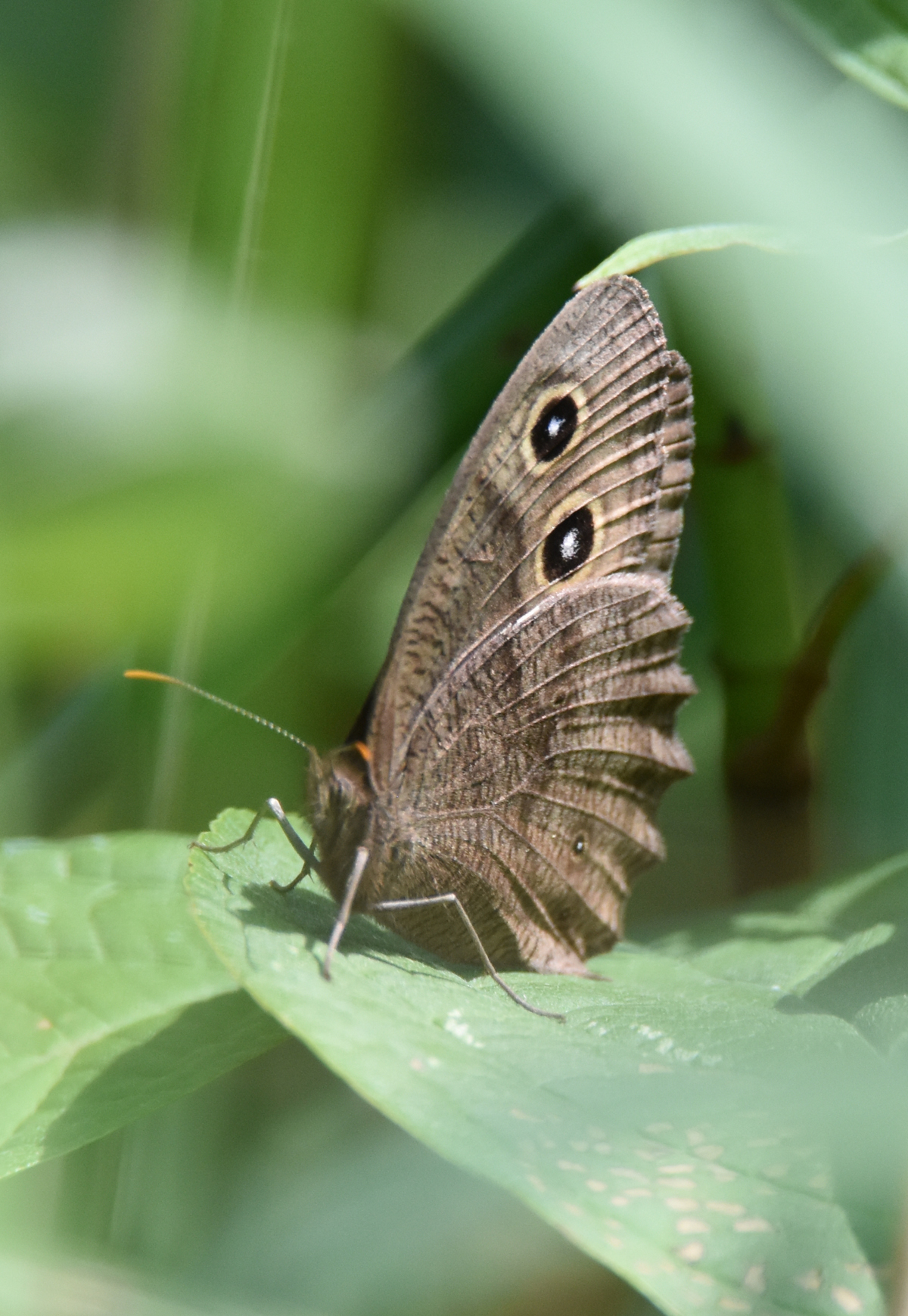
A Common Wood Nymph does not appear particularly feminine although it does have slender legs.
The Cabbage Whites and Sulphurs were plentiful and familiar. There was another butterfly about their size that was dark and fast moving. As I tried to figure out what it was it suddenly landed—but way down near the bottom of the densely packed plants.
That’s when I remembered that Common Wood Nymphs are flying now. Their most common flight behaviour includes this kind of aerial peek-a-boo—which helps set them apart from some of the other brown butterflies. They also seem to appear pretty dark in colour when in flight.
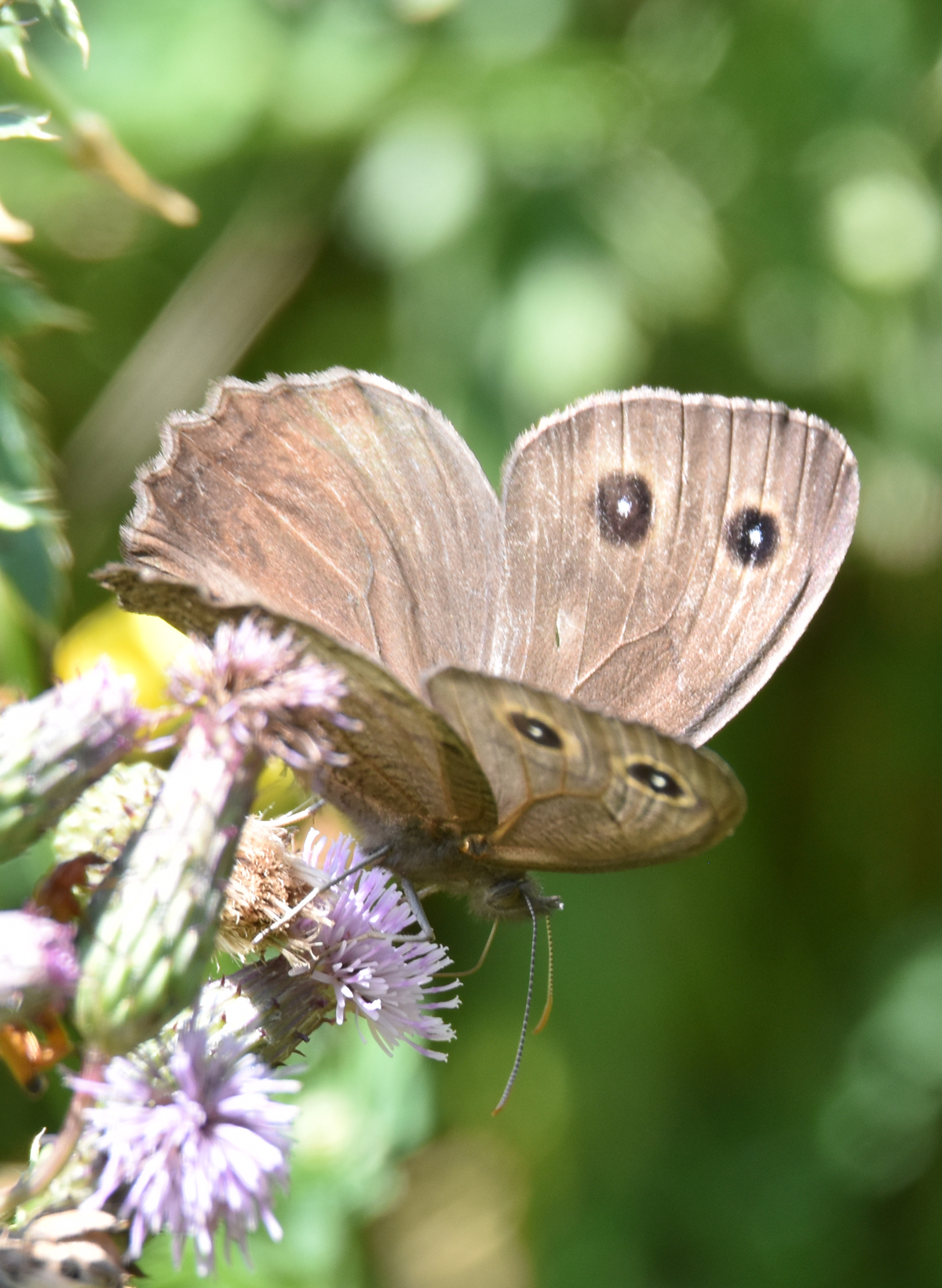
This Common Wood Nymph was taking nectar.
Luckily, I actually managed to get a couple to cooperate for photos. One was perched where I could just see it clearly through a frame of Goldenrod leaves. The other decided to tease some nectar out of a thistle.
Another nice thing to watch was a fast-flying Black Swallowtail. She was examining various plants, rejecting the Yellow Parsnip and choosing the Queen Anne’s Lace on which to lay her eggs.

She really had to hold on tightly in the breeze, especially since she was trying to put the eggs on the underside of the leaf.
Why Does That Great Blue Heron Have Its Mouth Open And Its Neck Quivering?
On a hot dry summer like this, it’s not unusual to find birds acting strangely. I watched a Great Blue Heron in the creek “panting.” It’s not really panting like a dog. The action involves a sort of shivering of its neck with its mouth open—Apparently it’s called “gular fluttering” to be technical.
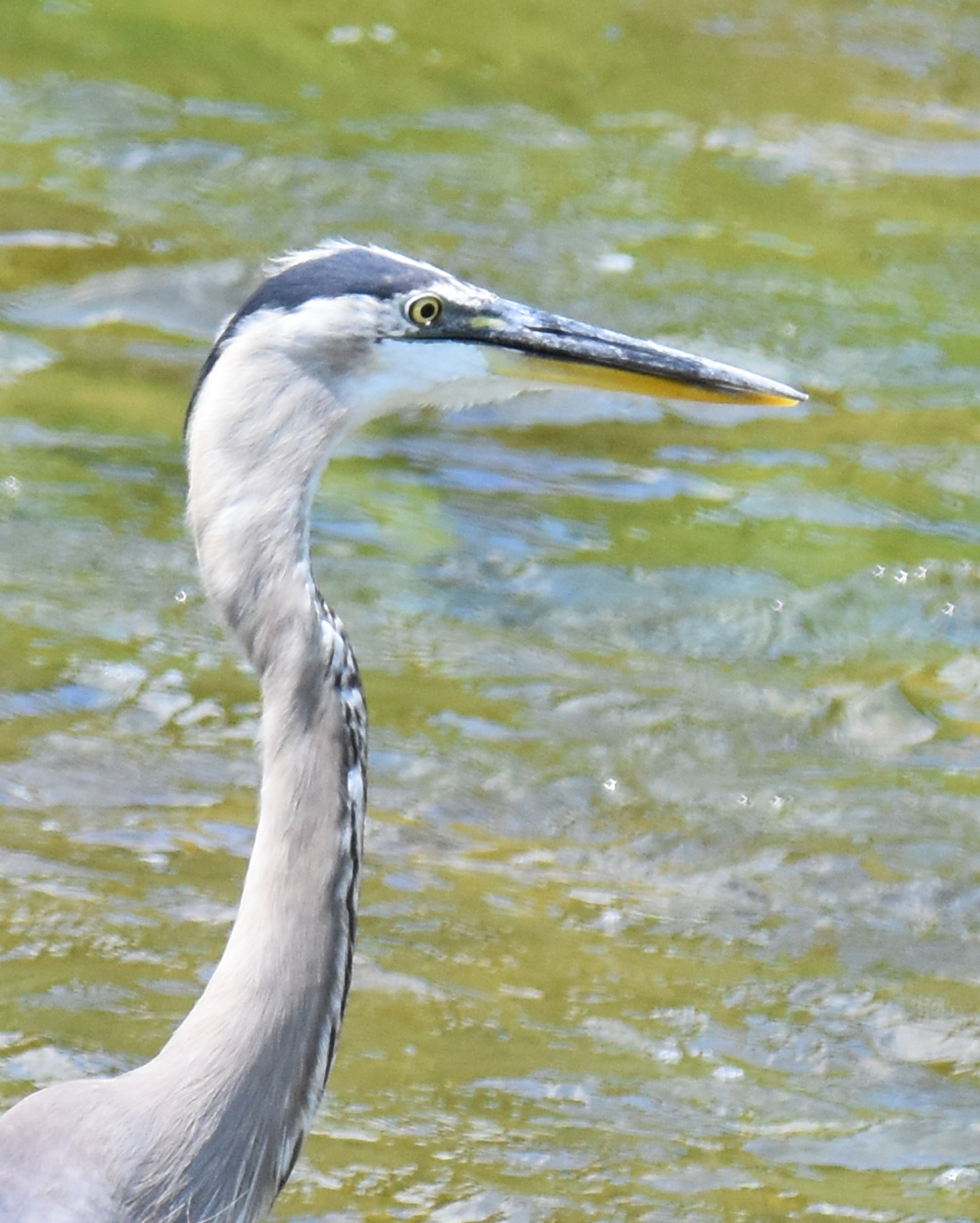
I couldn’t get quite the right photo of the neck feathers ruffled and the mouth open but you may get the general idea from these two photos.
I imagine the creek water felt good against its feet and legs too. I’m not sure if they can cool off from their legs, though. Many water birds protect their feet and legs against ice cold water by having limited circulation to their extremities.

There were lots of small fish in the Creek for the Heron to catch.
Why Is This Robin Lying on the Dusty Ground With Its Tail and Wings Spread In the Sunshine?
This robin, though, was very strangely contorted as it lay on the path ahead of me. For a few seconds, I wondered if it was an extremely recent victim of a predator. But then it blinked and I could see it was fine: it was warily watching me approach, so I slowed down to let it stay in place a few minutes longer.
Robins, sparrows and other birds sometimes lie down and spread out their wings and tails on hot days. They may be using the heat and brightness of the sun to get rid of parasites. Or they may be encouraging ants to walk between their loosely spread feathers to find lice and other parasites and capture them and carry them away. Dust and sand may be rubbed into the feathers lightly to try to shed parasites, too.
When it was finished, this robin shook out its feathers and flew back to a tree to finish preening.
I saw lots of damselflies and bees on my walk too. And one less common large beetle which I have yet to identify.
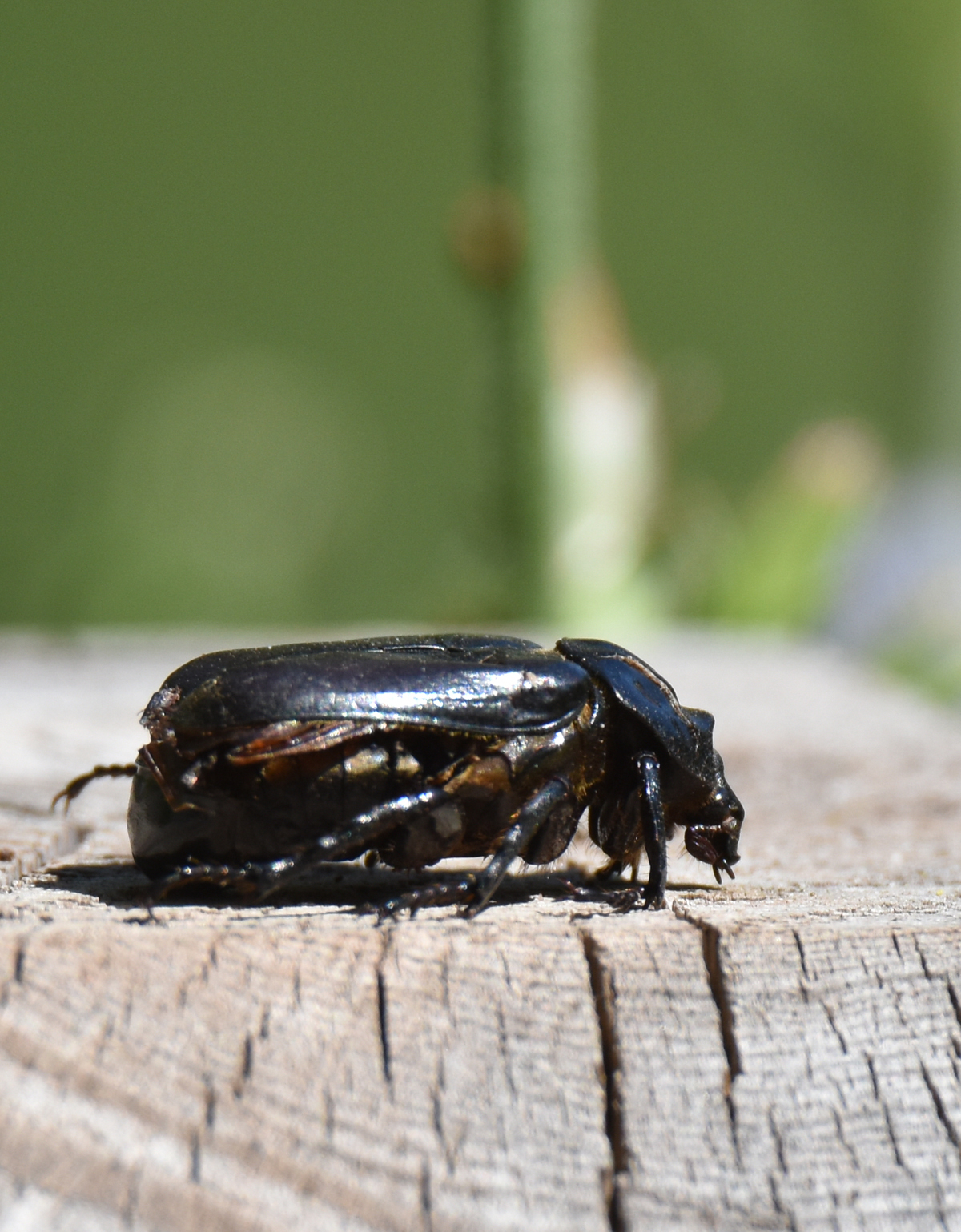
I’ll call it my fencepost beetle for now!
UPDATE: It seems likely that this is a Hermit Flower Beetle. If I find out I’m wrong, I’ll update this again.
I finished my walk just in time to pick up my child and get going to the next activity. I greatly enjoyed sharing part of the afternoon, though, with these other sun lovers.
Related Reading
- Why Is That Killdeer Fanning Its Wings and Tail?
- Scientific American It s hot and sunny, so birds lie down and sunbathe
Join In
Have you seen birds behaving oddly in the heat? Please share your sightings with a comment.

